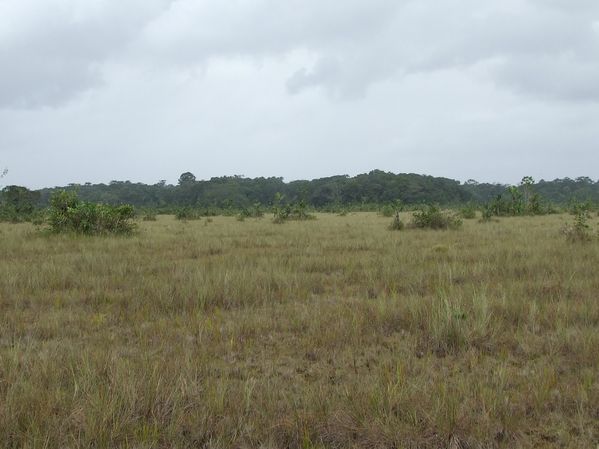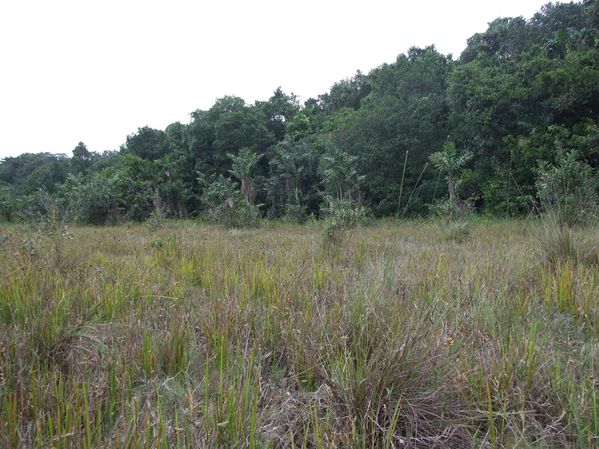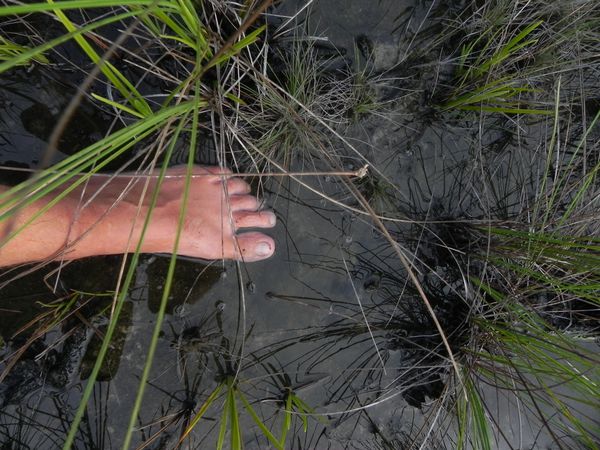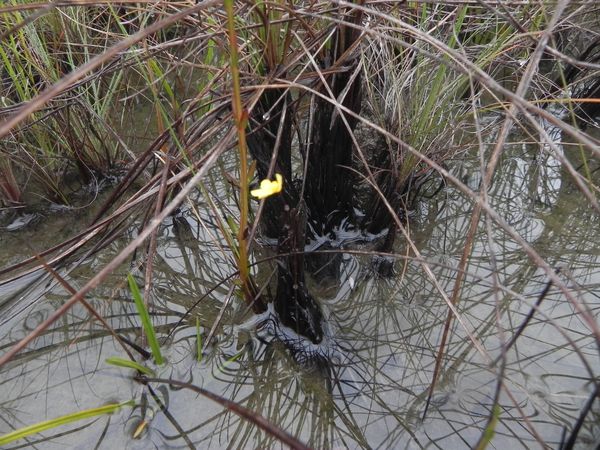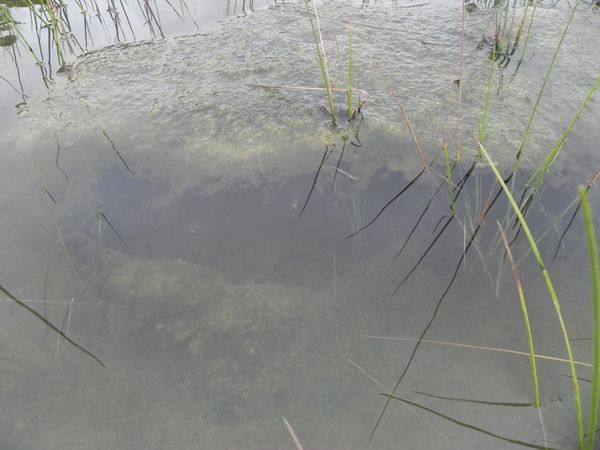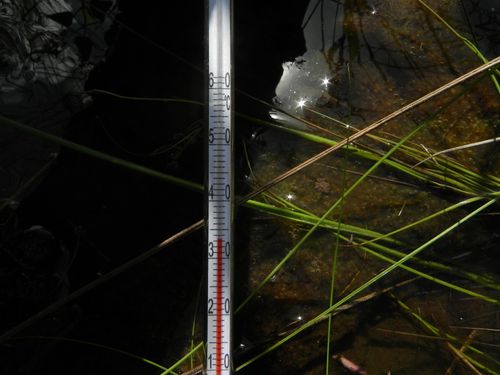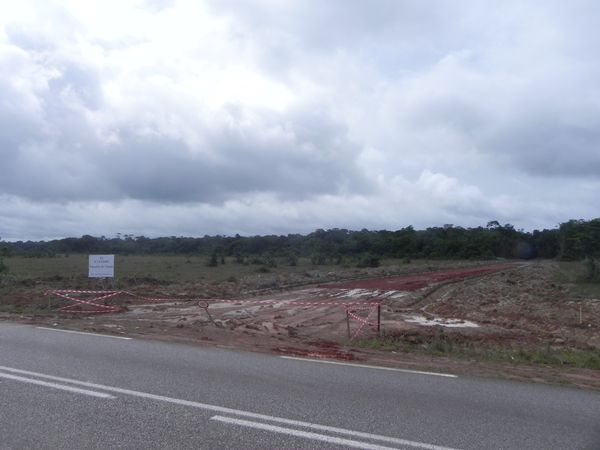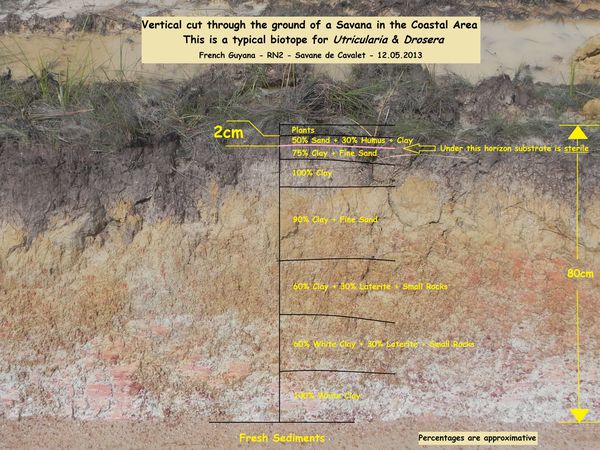French Guyana is a little country located on the Atlantic coast of South America.
It has common borders with Brazil on it's Southern part, with Surinam on it's Western part :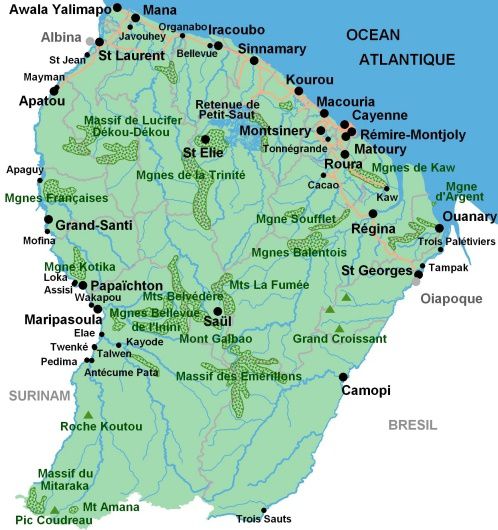 Roads are coloured in orange on the map : you'll find them along the coast...only there !
Roads are coloured in orange on the map : you'll find them along the coast...only there !
Many thanks to the Office du Tourisme de Guyane wich provided this map : http://www.tourisme-guyane.com
Main part of the country is covered with deep primary forest, and small mountains - 700 to 900m alt -
Many houndreds of rivers and little streams - localy called criques - covers the country like a net.
Helicopter view of the forest wich covers the entire territory :

Some of the mountains are so-called Inselbergs :
this is the Nourague Inselberg in the area of Montagnes Balenfois ; this remote area is more or less in the center of the country.
Inselbergs are made of pure rock, only few plants manage to grow on them,
because of the intensitivity of the erosion and of the power of the streaming water :

This is a little stream comming from the top of the Inselberg :
the rock is covered with a layer of slimy algae and is a wall of 60% of angle to the ground. The picture really not deserve the reality : you must imagine that I was standing in front of this wall of rocks as the picture was taken.
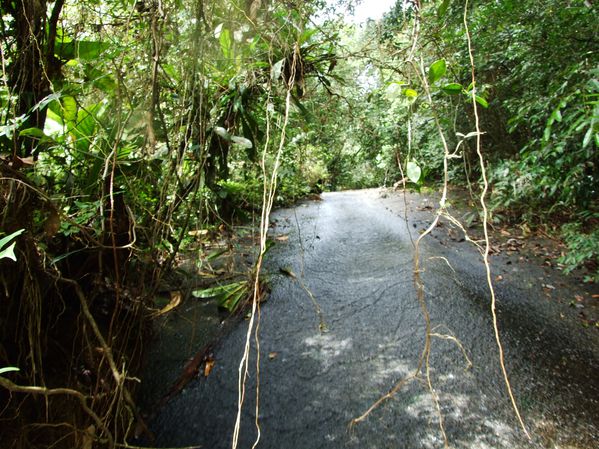
The coastal area is mainly covered with savanas, secondary forest and swamps.
It's also the most populated area...
Getting into the center of the country is rather difficult :
you'll have to use a boat to explore one of the houndreds of rivers, or the helicopter.
Only very few lateritic roads will permit you to have an insight into the deep forest :
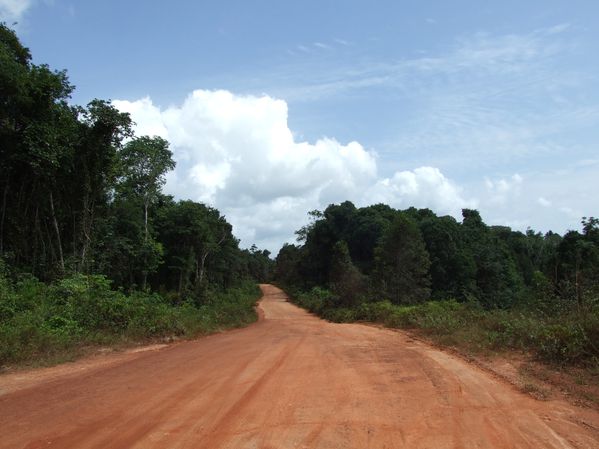
The different species of carnivorous plants from French Guyana :
Carnivorous plants can be found in many areas, depending of the species.
4 species can be found here : Drosera, Utricularia, Genlisea and Catopsis.
Catopsis - 1 species - can be found in the South and in the Center of our country,
along streams and on Inselbergs.
Genlisea - 3 species - can be found in wet savanas, covered with tall grasses.
Soil of this type of savana is wet during rain season, and dry out during hot season.
Drosera - 2 species -
Drosera grow in savanas, and seem to prefer sandy soils.
Utricularia - 25 species -
10 to 12 species of terrestrial and semi-aquatic Utricularia grow in French Guyana.
Aquatic Utricularia live in little streams, in ponds and in swamps.
They seem to prefer a full sun situation.
Epiphytic Utricularia can be found in the forests of our country.
Savanas : the home of Utricularia, Drosera and Genlisea :
During the rainy season, the savana is covered with a layer of water
wich is drained naturaly, or by man's intervention.
The rest stay in depressions 20cm to 30cm deep.
This is a wet part of the savana, were Nature drain the water by houndreds of streams wich are 2cm deep :
small but very efficient ; this part of the savana is always humid during rainy season, but dry out during the dry season : it's bushfire area !
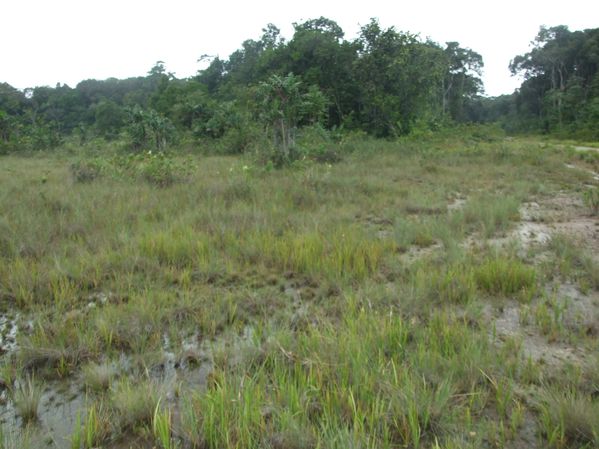
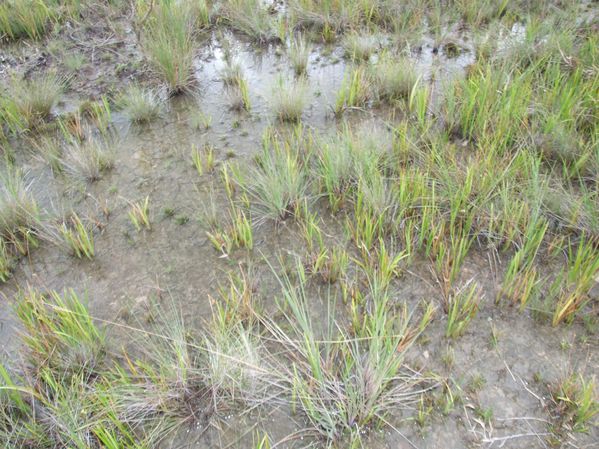
Some parts of the savana are situated at a deeper level : here the water level is 70cm to 1m during the rainy season in the deepest parts, about 30cm elsewere ; it dry out during the dry season, but not completely, as some very small streams survive the drought - of course, at the very end of the dry season, also these areas are dry, but the soil will held some moisture :

A few months later, it's hot and the grasses are dry, it's the bushfire season.
Savanas are covered with water during the rainy season, but they experience a serious drought
during the hot season : the soil dry out and become rock hard.
Every year, many savanas are burned down by bushfires.
For information, the palm tree in the middle of the picture is about 10 to 12m tall :
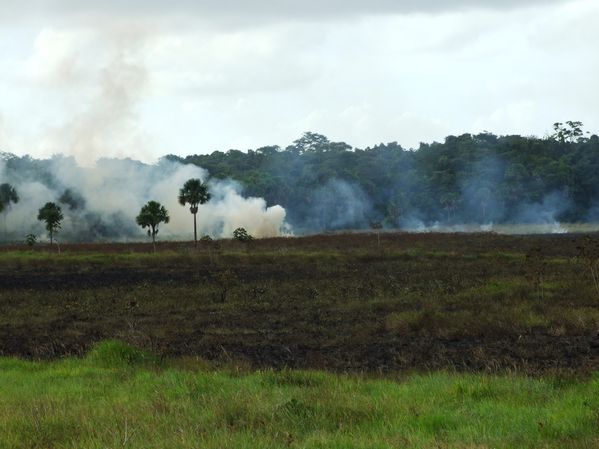
But Nature take revenge : look at this courageous Utricularia subulata wich grow at the very same place as the upper picture have been taken !
The grasses still show the signs of destruction, and the Utricularia survived the severe drought as seed.
Now it grow fast, because life is short : it will live for a few months only :
Carnivorous plants can be found in little streams, or in calm waters.
In humid areas you'll find some terrestrial Utricularia, and of course their aquatic representatives.
On the next 3 pictures, carnivorous plants are present :
Along this little stream in the forest, some very smal Utricularia pusilla grow in the mosses on the rocks :

Here is a biotope of terrestrial and semi-aquatic Utricularia, also situated in the forest :
 did you see them ? ..... the little yellow spots in the middle are terrestrial Utricularia hispida plants
did you see them ? ..... the little yellow spots in the middle are terrestrial Utricularia hispida plants
Water is the biotope of aquatic Utricularia. They can be found :
- detached and floating free, sometimes forming mats - see the pictures downwards -
- beeing attached to the ground
- beeing attached to other aquatic plants
- growing as semi-aquatics : " half aquatic-half terrestrial "
did you see them ? ..... the little pink-violet spots on the right & in the middle are Utricularia myriocysta free floating plants
Some plants will build mats because of their prolific way of life, others will profit of a mat of algae wich detaches itself from the ground to grow on this "artificial" island ; these mats of algae can be found in savanas, in the parts were the water level is high : during the months at the beginning of the rainy season, the water level increased slowly, and the algae profits of the sunlight to grow.
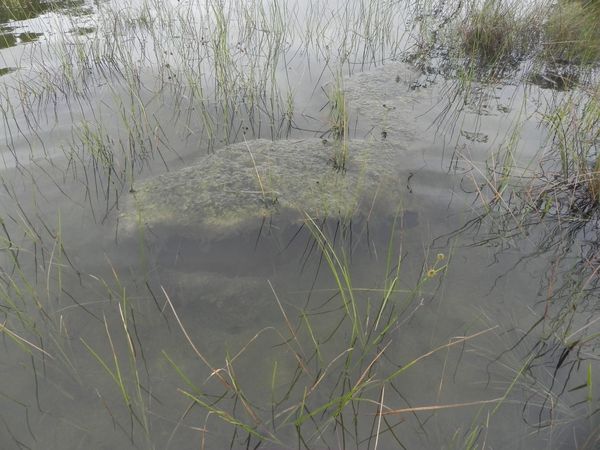
This island consist of a slimmy bunch of algae, wich have been detached from the ground for various reasons, like an animal or a human who walk through this algae colony and disturb the ground with it's feet or boots...
Well...now this island will made it's own life, and will be soon overgrown by other plants, pioneer plants like this small representative of the species Utricularia subulata :
The temperatures of the substrate and of the water can be very hight : on this picture, you'll see my setup :
I mesured the temperature under direct solar influence, and found 34°C at 3 O'clock afteernoon :
whilst in the shade, I found "only" 28°C :
Sometimes, Nature loose :
It's the time of Man, wich will put it's unforgetable print into the surrounding Nature :
A road was built through the savana, the drainage system was built at the same time :
Houses will be built next to the new road, on the savana, wich will be drained :
This kind of situation give us an opportunity to have an insight into the fragility of this biotope :
Here is a "cut" through the substrate on wich few and short grasses survive,
and were many carnivorous plants find their perfect place to live :
See how thin the layer with "fertile" substrate is :
This is one of my favourite biotope for carnivorous plants were you can find 14 species : Drosera capillaris Utricularia adpressa Utricularia amethystina Utricullaria gibba Utricularia guyanensis Utricularia hispida Utricularia juncea Utricularia nana Utricularia pusilla Utricularia subulata |
